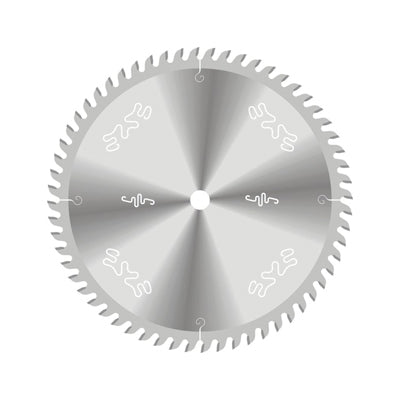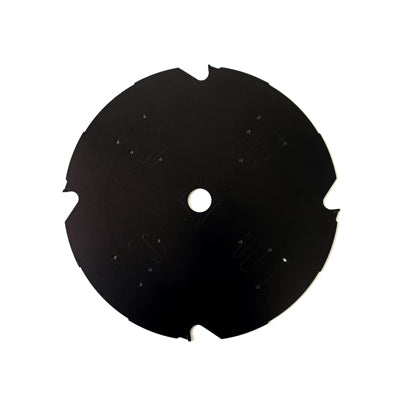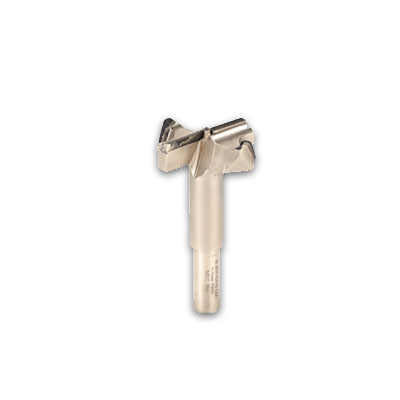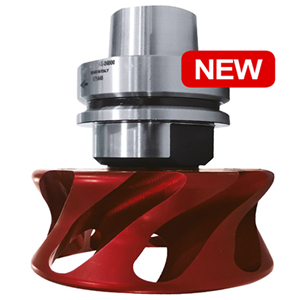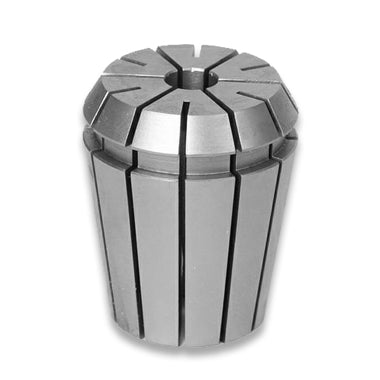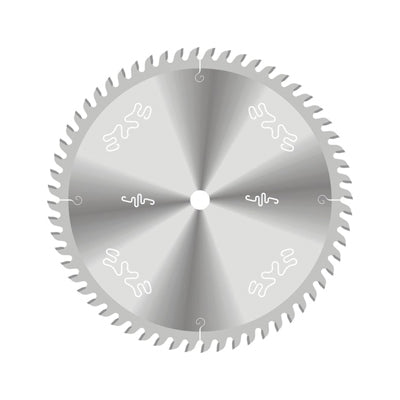Speeds and Feeds
Cutting speed
Cutting speed may be defined as the rate at the workpiece surface, irrespective of the machining operation used. A cutting speed for mild steel of 100 ft/min is the same whether it is the speed of the cutter passing over the workpiece, such as in a turning operation, or the speed of the cutter moving past a workpiece, such as in a milling operation. The cutting conditions will affect the value of this surface speed for mild steel.
There will be an optimum cutting speed for each material and set of machining conditions, and the spindle speed (RPM) can be calculated from this speed. Factors affecting the calculation of cutting speed are:
- The material being machined (steel, brass, tool steel, plastic, wood) (see table below)
- The material the cutter is made from (High-Carbon Steel, high-speed steel (HSS), Carbide, Ceramics, and Diamond tools)[5]
- The economical life of the cutter (the cost to regrind or purchase new, compared to the quantity of parts produced)
Cutting speeds are calculated on the assumption that optimum cutting conditions exist. These include:
- Metal removal rate (finishing cuts that remove a small amount of material may be run at increased speeds)
- Full and constant flow of cutting fluid (adequate cooling and chip flushing)
- Rigidity of the machine and tooling setup (reduction in vibration or chatter)
- Continuity of cut (as compared to an interrupted cut, such as machining square section material in a lathe)
- Condition of material (mill scale, hard spots due to white cast iron forming in castings)
The cutting speed is given as a set of constants that are available from the material manufacturer or supplier. The most common materials are available in reference books or charts, but will always be subject to adjustment depending on the cutting conditions. The following table gives the cutting speeds for a selection of common materials under one set of conditions. The conditions are a tool life of 1 hour, dry cutting (no coolant), and at medium feeds, so they may appear to be incorrect depending on circumstances. These cutting speeds may change if, for instance, adequate coolant is available or an improved grade of HSS is used (such as one that includes [cobalt]).
Cutting speeds for various materials using a plain high-speed steel cutter
|
Steel (tough) |
18–50 | 60–100 |
| Mild Steel | 3–38 | 10–125 |
| Mild Steel (with coolant) | 6–7 | 20–25 |
| Cast Iron (medium) | 1–2 | 6–8 |
| Alloy Steels (1320–9262) | 3–20 | 12–65[6] |
| Carbon Steels (C1008–C1095) | 4–51 | 0–70[7] |
| Free Cutting Steels (B1111–B1113 & C1108–C1213) | 35–69 | 115–225[7] |
| Stainless Steels (300 & 400 series) | 23–40 | 30–75[8] |
| Bronzes | 24–45 | 10–80 |
| Leaded Steel (Leadloy 12L14) | 91 | 30[9] |
| Aluminium | 122-305 | 400-1000[10] |
| Brass | 90–210 | 300–700[11] |
| Machinable Wax | 6 | 20 |
| Acetal Copolymer (Delrin) | 11 | 35 |
| Polyethylene | 12 | 40 |
| Acrylic (with coolant) | 15 | 50 |
| Wood | 183–305 | 600–1000 |
Spindle speed
The spindle speed is the rotational frequency of the spindle of the machine, measured in revolutions per minute (RPM). The preferred speed is determined by working backward from the desired surface speed (sfm or m/min) and incorporating the diameter (of workpiece or cutter).
The spindle may hold the:
- Material (as in a Lathe chuck)
- Drill bit in a drill
- Milling cutter in a milling machine
- Router bit in a wood router
- Shaper cutter or knife in a wood shaper or spindle moulder
- Grinding wheel on a grinding machine.
Excessive spindle speed will cause premature tool wear, breakages, and can cause tool chatter, all of which can lead to potentially dangerous conditions. Using the correct spindle speed for the material and tools will greatly enhance tool life and the quality of the surface finish.
Spindle speed calculation
Most metalworking books have nomograms or tables of spindle speeds and feed rates for different cutters and workpiece materials; similar tables are also likely available from the manufacturer of the cutter used.
The spindle speeds may be calculated for all machining operations once the SFM or MPM is known. In most cases, we are dealing with a cylindrical object such as a milling cutter or a workpiece turning in a lathe so we need to determine the speed at the periphery of this round object. This speed at the periphery (of a point on the circumference, moving past a stationary point) will depend on the rotational speed (RPM) and diameter of the object.
One analogy would be a skateboard rider and a bicycle rider travelling side by side along the road. For a given surface speed (the speed of this pair along the road) the rotational speed (RPM) of their wheels (large for the skater and small for the bicycle rider) will be different. This rotational speed (RPM) is what we are calculating, given a fixed surface speed (speed along the road) and known values for their wheel sizes (cutter or workpiece).
The following formulae may be used to estimate this value.
Approximation
The exact RPM is not always needed, a close approximation will work. For instance, a machinist may want to take the value of 
Feed rate
Feed rate is the velocity at which the cutter is fed, that is, advanced against the workpiece. It is expressed in units of distance per revolution for turning and boring (typically inches per revolution [ipr] or millimeters per revolution). It can be expressed thus for milling also, but it is often expressed in units of distance per time for milling (typically inches per minute [ipm] or millimeters per minute), with considerations of how many teeth (or flutes) the cutter has then determined what that means for each tooth.
Formula to determine feed rate
This formula can be used to figure out the feed rate that the cutter travels into or around the work. This would apply to cutters on a milling machine, drill press and a number of other machine tools. This is not to be used on the lathe for turning operations, as the feed rate on a lathe is given as feed per revolution.
Where:
- FR = the calculated feed rate in inches per minute or mm per minute.
- RPM = is the calculated speed for the cutter.
- T = Number of teeth on the cutter.
- CL = The chip load or feed per tooth. This is the size of chip that each tooth of the cutter takes.
Featured collection
-
General Purpose Saw Blade ATB 10 in. x 40 Tooth
Regular price $80.13 USDRegular price -
7-1/4 in. - Fiber Cement Saw Blade
Regular price $44.99 USDRegular price -
PCD Tipped Hinge Boring Bit LH 30mm x 57.5mm
Regular price $267.43 USDRegular price -
HSK63F Tool holders with Twister Nut for Dust Extraction
Regular price $650.35 USDRegular price -
Router Collets
Regular price From $24.35 USDRegular price -
Tool Clamper for CNC Too Setting
Regular price $320.00 USDRegular price -
General Purpose Saw Blade TCG 10 in. x 60 Tooth
Regular price $69.30 USDRegular price



